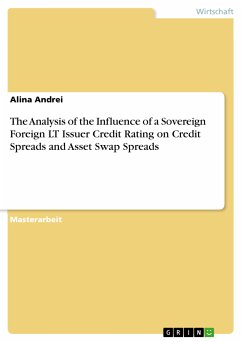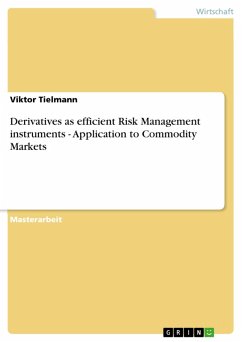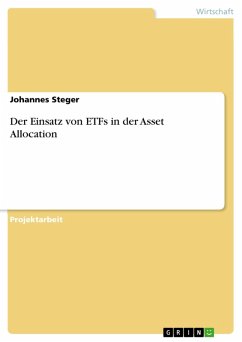Masterarbeit aus dem Jahr 2012 im Fachbereich BWL - Bank, Börse, Versicherung, Fachhochschule des bfi Wien GmbH, Veranstaltung: Banking and Finance, Sprache: Deutsch, Abstract: The purpose of this paper is to measure the correlation between the foreign longterm issuer credit ratings and both, credit spreads and ASW and to assess the role that the Rating Agencies play on the capital markets. Ratings reflect the financial strength and credit-worthiness of the issuer as assessed by the external rating agency. Spreads indicate the market's expectations in connection to the riskiness of the investment. Hence high spreads compensate investors for the higher risk taken. The result of the analysis is that there indeed exist correlations between foreign long-term issuer credit ratings and both, credit spreads and ASW. A high spread is strongly correlated to a low credit rating. However, even if the relationship exists, it is not possible to draw clear patterns of the market behavior. In some of the analyzed cases, market movements took place before a rating change, which indicates that both, the market and rating agencies considered the same information. In other cases, the market was influenced by the rating change. And sometimes the market reacted different to the rating agencies decisions and expectations. Overall the market reacts differently fast and not homogenous to the "fundamental" information it has. This makes it impossible to clearly state the extent to which ratings influence spreads. The results are not clear enough to indicate a more precise answer or to fully understand the market behavior. The market is a highly volatile environment in which it is impossible to draw predictable behavior patterns in relation purely to the credit rating. This inconsistency in reaction is partially conflicting the theory of the strong-form EMH, as the market reacts to the asymmetric level of information available or prices in other factors not covered in this paper.
Dieser Download kann aus rechtlichen Gründen nur mit Rechnungsadresse in A, B, BG, CY, CZ, D, DK, EW, E, FIN, F, GR, HR, H, IRL, I, LT, L, LR, M, NL, PL, P, R, S, SLO, SK ausgeliefert werden.









